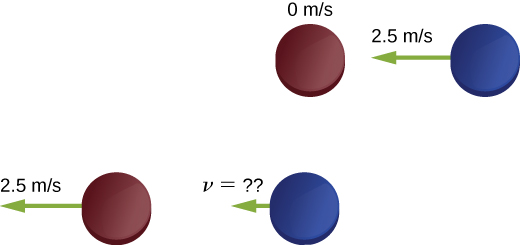| << Chapter < Page | Chapter >> Page > |
Check Your Understanding Would the ball’s change of momentum have been larger, smaller, or the same, if it had collided with the floor and stopped (without bouncing)?
Would the ball’s change of momentum have been larger, smaller, or the same, if it had collided with the floor and stopped (without bouncing)?
If the ball does not bounce, its final momentum
is zero, so

Before you look at the solution, what do you think the answer will be?
The blue puck final velocity will be:
Before the collision, the momentum of the system is entirely and only in the blue puck. Thus,
(Remember that the masses of the pucks are equal.) Substituting numbers:
Check Your Understanding Even if there were some friction on the ice, it is still possible to use conservation of momentum to solve this problem, but you would need to impose an additional condition on the problem. What is that additional condition?
Consider the impulse momentum theory, which is
. If
, we have the situation described in the example. If a force acts on the system, then
. Thus, instead of
, we have
where
is the force due to friction.

Notification Switch
Would you like to follow the 'University physics volume 1' conversation and receive update notifications?